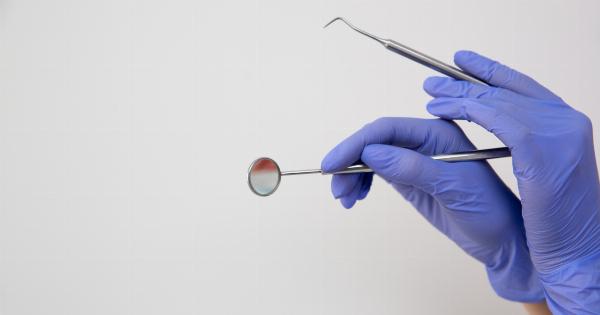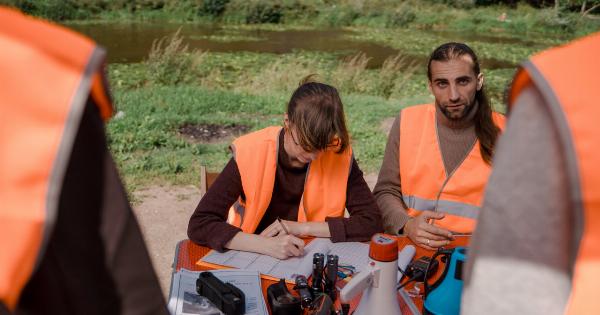Exams are a common way to assess knowledge, but did you know they can also help determine your age? Age estimation through examinations has been a long-standing practice, especially in situations where individuals’ birth records are incomplete or nonexistent. This article will explore various methods that professionals employ to find out a person’s age using exams.
The Importance of Age Determination
Age determination is essential for a variety of reasons, including legal, social, and medical purposes.
In legal scenarios, age plays a significant role in determining eligibility for certain rights and responsibilities, such as voting, driving, and entering into contracts. Socially, age is a crucial factor in determining eligibility for education, employment, and insurance. Additionally, in medical settings, accurate age information is vital for proper diagnostic and treatment purposes.
Method 1: Dental Examination
Dental examination is one of the commonly used methods for age estimation, particularly among children and adolescents.
The growth and development of teeth follow a relatively predictable pattern, allowing dental professionals to assess a person’s age based on the stage of dental development.
During a dental examination, a trained dentist or orthodontist evaluates various factors, such as the eruption of primary and permanent teeth, root development, and tooth wear.
By comparing these dental markers with existing dental age assessment charts, dental professionals can approximate a person’s age with a reasonable degree of accuracy.
Method 2: Skeletal Age Determination
Skeletal age determination involves assessing an individual’s skeletal development to estimate their age.
This method is commonly applied when dealing with individuals who have reached or nearly reached their full skeletal maturity, such as young adults.
Medical imaging techniques like X-rays are used to analyze the maturity of specific bones or growth plates in the body.
By comparing these findings with established reference standards, radiologists or forensic anthropologists can determine an individual’s skeletal age reasonably accurately.
Method 3: Psychological Evaluation
Psychological evaluation is another approach used to estimate a person’s age, primarily in cases involving children or individuals with intellectual disabilities.
In this method, professionals assess various cognitive and behavioral factors to infer the person’s developmental stage, which can indirectly indicate their chronological age.
Psychological evaluations often involve a battery of tests and assessments, including intelligence testing, language development assessments, and adaptive behavior assessments.
By comparing the individual’s performance on these tests with standardized norms, psychologists can make an estimate of their age.
Method 4: Assessment of Secondary Sexual Characteristics
During puberty, the development of secondary sexual characteristics provides an observable marker of a person’s age.
Assessing these characteristics, such as breast development in females or facial hair growth in males, can offer valuable insights into an individual’s stage of sexual maturation.
Medical professionals, particularly endocrinologists or gynecologists, often employ Tanner staging or other similar systems to assess the progression of secondary sexual characteristics.
By correlating these observations with established norms, they can estimate an individual’s age.
Method 5: Radiographic Analysis of the Hand and Wrist
Radiographic analysis of the hand and wrist is a commonly used method for estimating age, especially in forensic investigations or immigration cases.
As an individual grows, the bones and joints of the hand and wrist undergo changes in their shape, size, and fusion patterns.
By obtaining X-rays of the hand and wrist, radiologists or forensic experts can compare these radiographs with established standards to estimate a person’s skeletal age.
This method is particularly effective for individuals who have reached or nearly reached skeletal maturity.
Method 6: Growth Plates Evaluation
In individuals who are still growing, such as children and adolescents, evaluating the growth plates can provide valuable information about their stage of development. Growth plates are areas of developing cartilage near the ends of long bones.
Orthopedic specialists or radiologists can use imaging techniques like X-rays to assess the state of growth plates.
The appearance and closure of growth plates follow a pattern related to age, allowing experts to estimate a person’s developmental stage and, consequently, their age.
Method 7: Palmar Crease Analysis
The analysis of palmar creases, which are the wrinkles or lines present on the palms, is a less commonly used method for age estimation. These creases form in a predictable manner as a person ages, with additional creases appearing over time.
Forensic experts or medical professionals may use magnification devices and specialized techniques to evaluate the number and characteristics of palmar creases.
By comparing these observations with established patterns, they can make an estimation of a person’s age.
Method 8: Ossification Centers Evaluation
Ossification centers are regions where bone formation initially occurs in infants and gradually extends as they grow.
By examining the presence and development of ossification centers in specific bones, radiologists or pediatricians can estimate an individual’s skeletal age.
Through X-rays or other imaging techniques, professionals compare the appearance of ossification centers with established standards for a given age range. This method is particularly useful for assessing the age of infants and young children.
Method 9: Hair Analysis
Hair analysis can provide an approximation of a person’s age, primarily based on the graying or whitening of hair. As individuals age, hair pigmentation gradually decreases, resulting in a visible change in hair color.
Forensic experts or trichologists may evaluate the color, texture, and density of an individual’s hair to estimate their age.
While this method is less precise compared to others, it can still offer valuable supplementary information in age determination.
Method 10: Examination of Skin Elasticity and Wrinkles
The examination of skin elasticity and the presence of wrinkles is perhaps the most subjective method of age estimation. As individuals get older, their skin gradually loses elasticity, leading to the formation of wrinkles and sagging.
Dermatologists or forensic experts may assess the firmness, texture, and overall appearance of an individual’s skin to estimate their age.
While this method can be influenced by various factors, such as sun exposure or genetics, it can provide some general insights into a person’s age.
Conclusion
Age estimation through examinations encompasses a wide range of methods used in different fields, including dentistry, radiology, psychology, and dermatology.
These methods leverage observable changes in dental, skeletal, cognitive, behavioral, and physical characteristics to estimate a person’s age with a reasonable degree of accuracy.
While these techniques can provide valuable insights, it is important to acknowledge that age estimation based on physical examinations is not always precise.
Various factors, such as individual variations and external influences, can affect the accuracy of these methods. Therefore, it is essential to consider these factors and use a combination of examination techniques to improve the reliability of age estimation results.




























